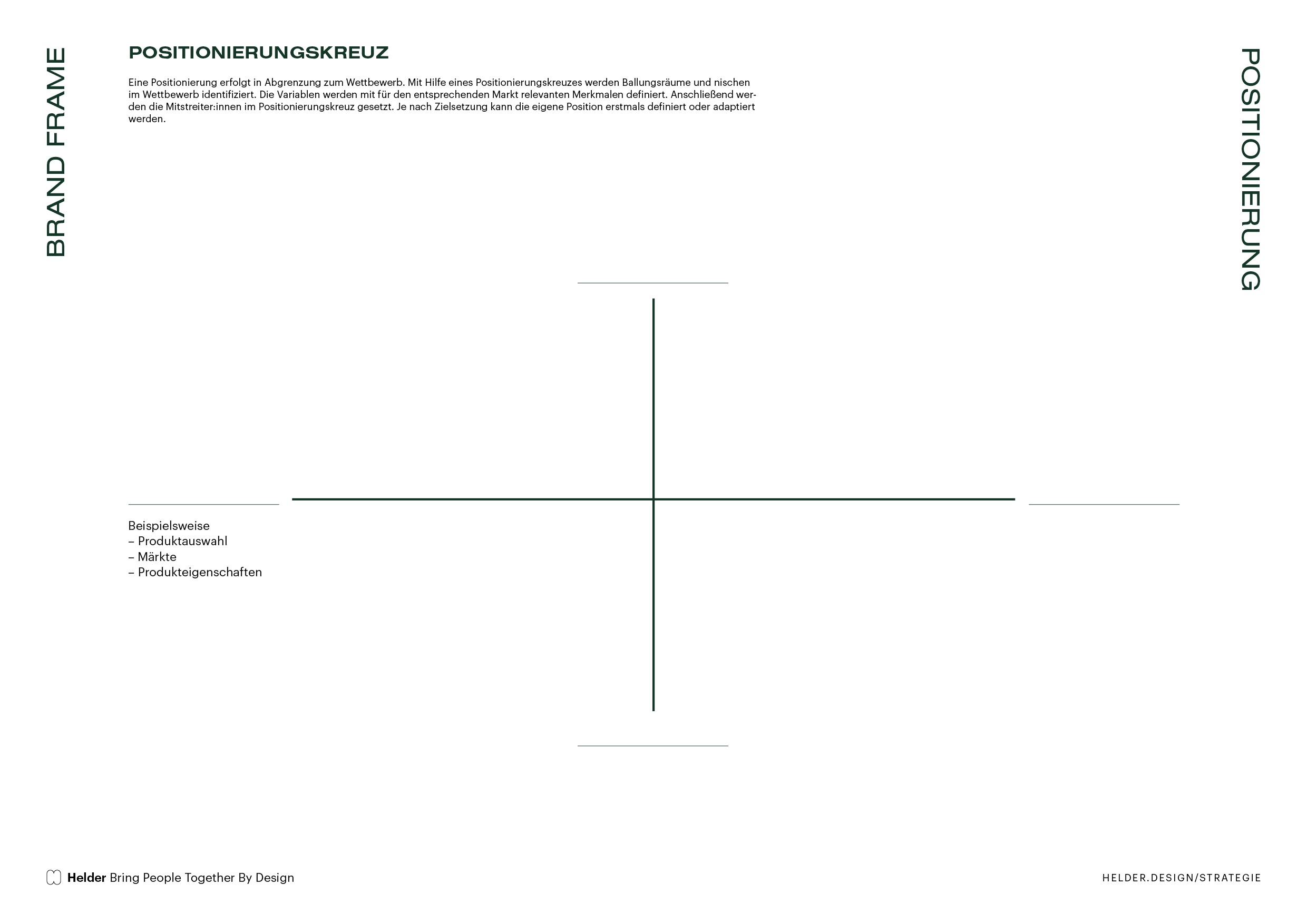Attitude creates relevance
Brand positioning is the occupation of a defined stand in the relevant market in order to achieve an attractive and unique image for the target groups.
The right positioning in the field of market participants is essential for the success of a brand in order to differentiate itself from competitors. The positioning of a brand is an expression of the brand strategy. It shows what the brand stands for. With the help of our brand process, we evaluate a distinctive profile that clearly shows the special features of the brand and its relevance for customers.
Recognize potentials in our brand workshop
Active alignment in the relevant market
It requires clearly defined positioning objectives and a suitable conceptual design. The starting point is the current position, which can be adapted depending on the objective or must be defined for the first time in the case of new companies.
Realistic self-assessment
In order to turn strategic ideas into concrete reality, it is essential to realistically evaluate one’s own possibilities. What can and does the brand want to achieve? One should be careful not to make empty promises and unrealistic claims – a positioning strategy is useless if the brand cannot meet its own expectations – and thus those of potential customers – because the appropriate resources or culture are not available.
Understanding lifestyles, defining target groups
Potential customers with their values, needs, and lifestyles are an essential part of the positioning process. It is important to understand which brand characteristics fulfil the needs and wants of the desired target group. Ultimately, the goal is to gain a unique position in the minds of the customers. The social model of the Sinus Milieus serves as a guide for orientation, pooling people with similar values and social situations into groups. Particular attention must be paid to what motivates the various target groups (to make a purchasing decision). This is not necessarily just a matter of the income level.
Social milieus according to the Sinus Institute
For example, the Established and the Cosmopolitan Avant-gardes both belong to the upper middle class and upper class. Both milieus are target groups for high-priced mineral water. Although the brands San Pellegrino and Viva con Aqua are on a similar level in terms of price, the Established would probably rather reach for the Italian classic, while the Cosmopolitan Avant-gardes put more value on the ethical aspects of the product. This example presents two brands that have managed to visibly reflect the self-perception and world perception of their target group in their positioning. It is therefore crucial to understand what subjective assessment your brand triggers in your customers.

Moodboard of lifestyles: Cosmopolitan Avant-gardes & Established
Sharpen the brand, avoid interchangeability
- The market is full: 80,000 new trademark applications were filed in Germany alone in 2020.
- Purchase decisions are emotional: Whether customers commit to a brand has less and less to do with needs but more with certain lifestyles.
- Competitor analysis is an important part: part of our process is not only to analyze what competing brands stand for, but we also need to be clear and honest about the brand’s own promise.
- The positioning map as orientation: The positioning in the competition is visualized using graphic models. You can see at a glance where niches and thus opportunities are opening up. Conversely, “agglomerations” of brands are an indication of their interchangeability.
- Focusing is indispensable: To position yourself correctly, you are forced to reduce to one own brand core – and that’s a good thing.
We take a stand
Focusing and positioning yourself is often a challenge for brands and companies. With the market as a space, a clear focus on relevant characteristics helps to achieve a unique position. Which features need to be made strong in order to stand out? Brand positioning requires recurring evaluation, as the market and lifestyles are constantly changing and may require a rebranding. As part of our brand process, we discuss the inner structures of your brand in order to use the findings to create a basis for external communication and the brand design.
Want to be the number 1?
Let’s talk.


